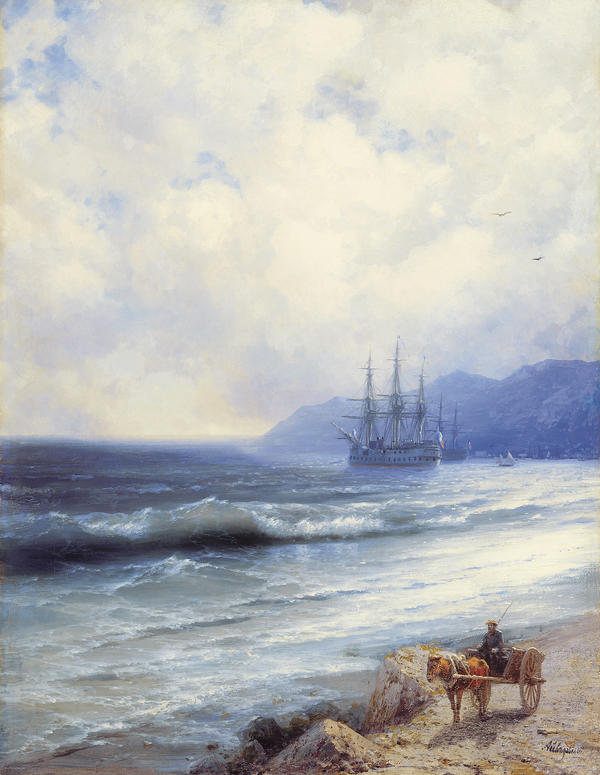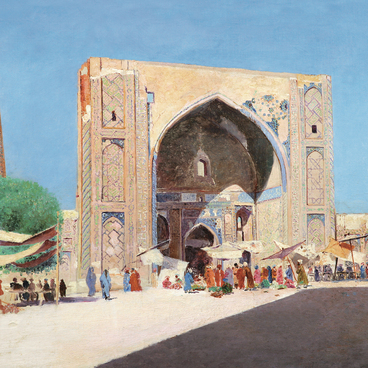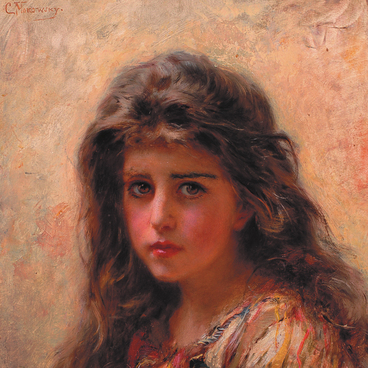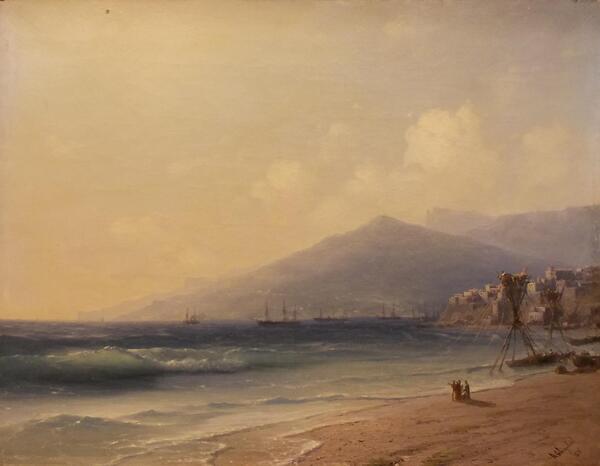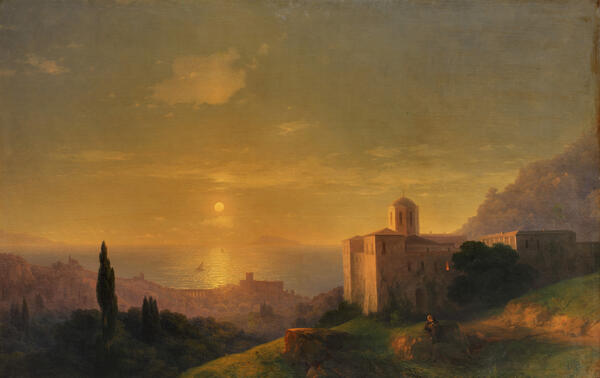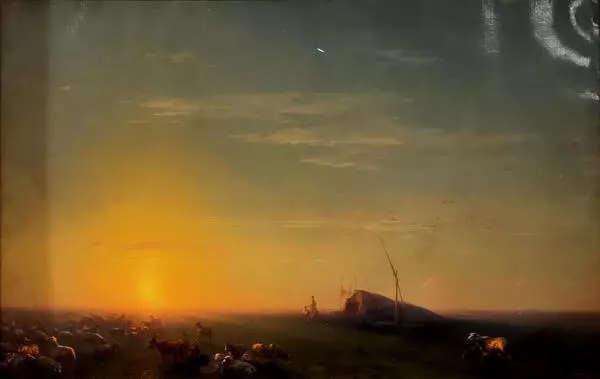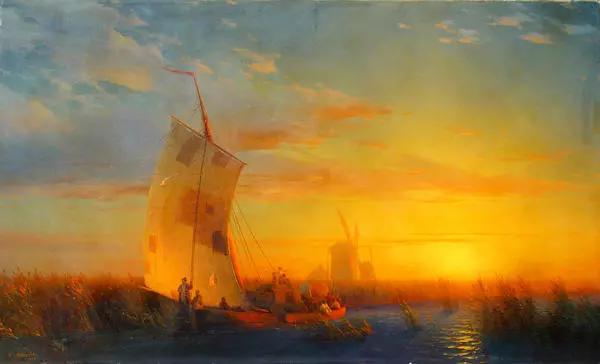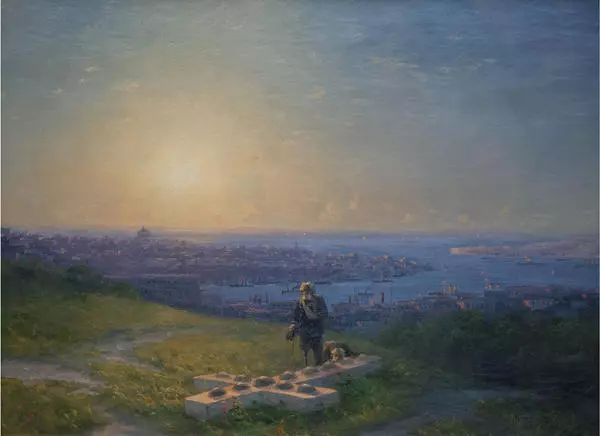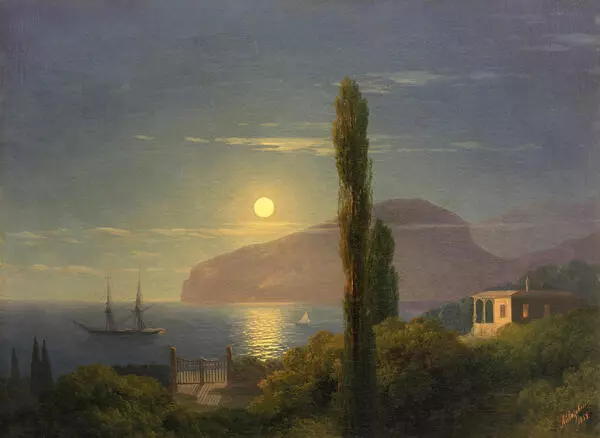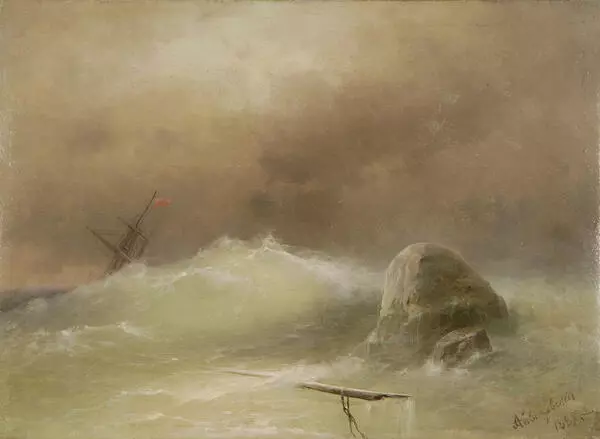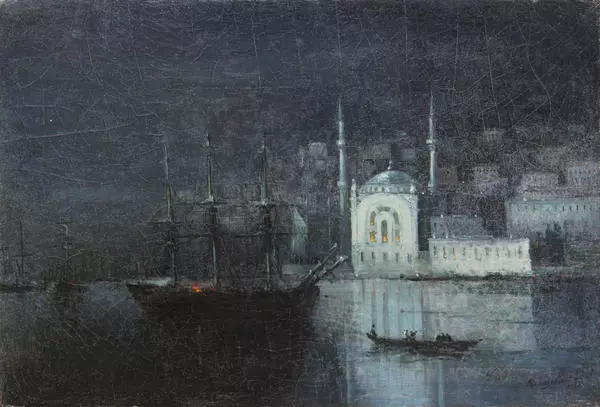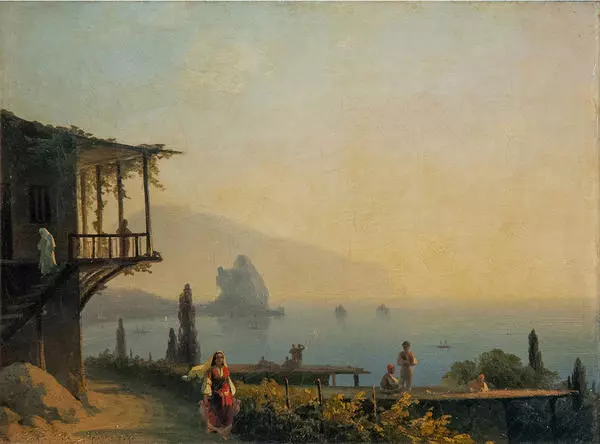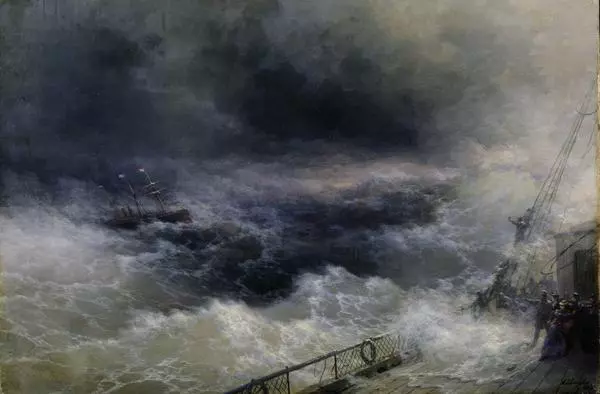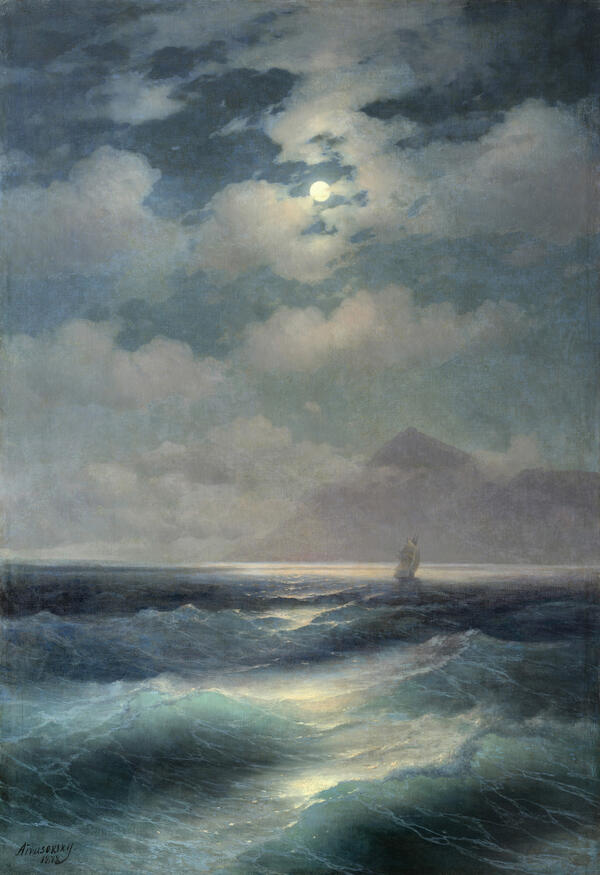Ivan Aivazovsky is an outstanding marine painter, the founder of an original tradition of the Russian landscape inspired by nature of the seaside Crimea. He studied under Maxim Vorobyov, a famous painter and Professor of the St. Petersburg Imperial Academy of Fine Arts, mentor of a whole galaxy of talented Russian landscape artists.
Aivazovsky left around 6 thousand canvases behind him. The artist had a special manner of painting: for a short period of time he worked in the open air, and then completed the painting in his studio, always leaving room for improvising.
Aivazovsky painted his Highwater, like many other of his pictures, from memory, in just a few hours of the afternoon till practically momentary southern sunset. It was based on the theme discovered during a morning stroll along the seashore.
The composition is distinguished by its natural clarity and seamless representation of moving textures: sea water, air and light. The exquisite tincture is governed by tempered color scale.
The picture dates back to 1870s, a transition period in creative activities of Ivan Aivazovsky. From ornamentally flamboyant and meticulously painted works of 1840s - 1860s he proceeded to more reserved color scale, however more flexible and richer in pictorial patterns. In the given period the artist painted his seascapes in blue color scale.
For the exhibited painted the artist selected the emotional moment when the sea is advancing on the spectator, coming out from the very depth. The continuous mass of water at the horizon, gradually approaching, is breaking up in glittering variety of wave ridges, crests and water drops, then suddenly stops, as if separated from the shore by an invisible barrier.
The parallel silhouettes of the fast-moving sailboat and the simple two-wheeled cart slowly rolling along the waterfront develop the theme of the border-line between the sea-swell and the earth.
Something like this can be seen in the background of the seascape, where the distinctive skyline is dividing the blue surface of the sea and curling masses of clouds touched with pink. The two-wheeled pleasure cart in every way shows unimaginative leisureliness of the way of life of old Feodosiya. The sailboat flying the French flag represents the big wide world so naturally connected by the sea with the birthplace of the painter. The hills in the distance are most likely the coastline of Koktebel and the Camel Mountain.
Aivazovsky left around 6 thousand canvases behind him. The artist had a special manner of painting: for a short period of time he worked in the open air, and then completed the painting in his studio, always leaving room for improvising.
Aivazovsky painted his Highwater, like many other of his pictures, from memory, in just a few hours of the afternoon till practically momentary southern sunset. It was based on the theme discovered during a morning stroll along the seashore.
The composition is distinguished by its natural clarity and seamless representation of moving textures: sea water, air and light. The exquisite tincture is governed by tempered color scale.
The picture dates back to 1870s, a transition period in creative activities of Ivan Aivazovsky. From ornamentally flamboyant and meticulously painted works of 1840s - 1860s he proceeded to more reserved color scale, however more flexible and richer in pictorial patterns. In the given period the artist painted his seascapes in blue color scale.
For the exhibited painted the artist selected the emotional moment when the sea is advancing on the spectator, coming out from the very depth. The continuous mass of water at the horizon, gradually approaching, is breaking up in glittering variety of wave ridges, crests and water drops, then suddenly stops, as if separated from the shore by an invisible barrier.
The parallel silhouettes of the fast-moving sailboat and the simple two-wheeled cart slowly rolling along the waterfront develop the theme of the border-line between the sea-swell and the earth.
Something like this can be seen in the background of the seascape, where the distinctive skyline is dividing the blue surface of the sea and curling masses of clouds touched with pink. The two-wheeled pleasure cart in every way shows unimaginative leisureliness of the way of life of old Feodosiya. The sailboat flying the French flag represents the big wide world so naturally connected by the sea with the birthplace of the painter. The hills in the distance are most likely the coastline of Koktebel and the Camel Mountain.

